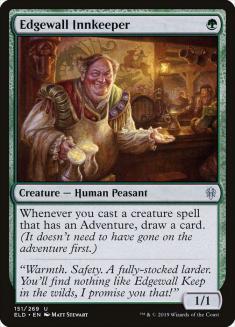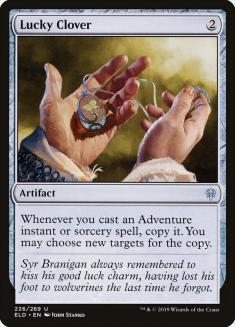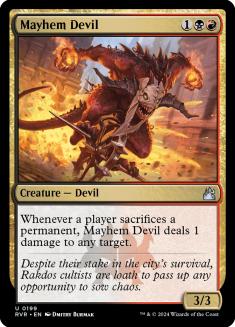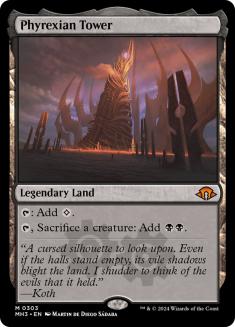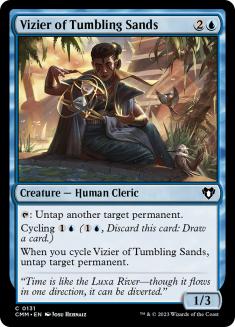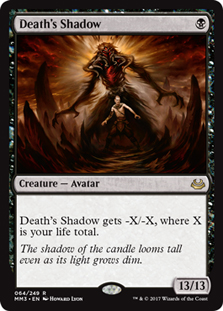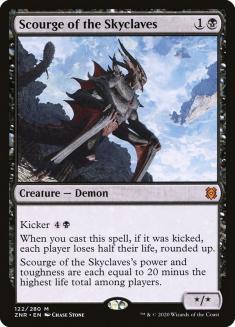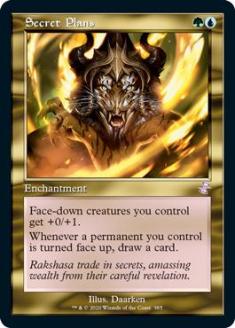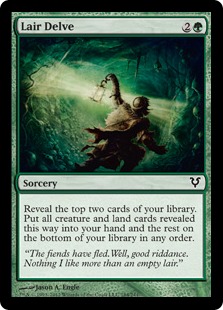Welcome to another edition of Fact or Fiction! Today, Sam Black, Paulo Vitor Damo da Rosa, and Cedric Phillips are here to give their takes on five statements about all the competitive formats in Magic. Don’t forget to vote for the winner at the end!
1. Four-Color Adventures is the deck to beat in Zendikar Rising Standard.
Sam Black: Fact. Grand Finals could easily change this, but for now, everyone is still scarred from the first week of the format when Omnath, Locus of Creation absolutely dominated, and the prevailing sense has been that, without Uro, Adventures is the best shell for Omnath. With Uro out of the picture, I’d originally hoped this would open up space for Rogues, but the card Lucky Clover is very good against Dimir decks with counterspells because it’s cheap enough to sneak onto the battlefield before they can stop it and those colors can’t really deal with artifacts very well. This means Adventures was going to be the hardest Omnath shell to beat, but the further discovery of Chainweb Aracnir as a sideboard card for any green deck has been absolutely brutal for Rogues.
There are aggressive decks like Rakdos and Gruul that I wouldn’t count out, but I think it’s safe to call Four-Color Adventures the deck to beat.
Paulo Vitor Damo da Rosa: Fact. I think it’s pretty clear at this point that Omnath, Locus of Creation is the strongest thing to be doing in Zendikar Rising Standard, and once the dust settles we’ll probably find that Adventures is the best shell for the card. The Four-Color Adventures decks takes the biggest strength of the Four-Color Ramp archetype (the fact that your opponent is presented with an impossible situation, as all your creatures and spells are immediate must-answers) and takes it even further — not only is it capable of playing an Omnath that will win the game if unchecked but it’s also capable of doing that with Edgewall Innkeeper and Lucky Clover.
To beat that deck, you need to be ready to answer a small creature in Edgewall Innkeeper, an artifact in Lucky Clover, and a medium-sized creature in Omnath, and then you still need to beat their late-game, which consists of Fae of Wishes and Escape to the Wilds. It’s a really tough ask of any deck.
Of course the Four-Color Adventures deck isn’t a strict upgrade to the Four-Color Ramp deck — the mana is definitely worse, for example, and the late-game is also not as strong as Genesis Ultimatum. I don’t expect it to completely replace Four-Color Ramp, but rather coexist with it, so it might be a stretch to call it “the deck to beat,” but I do think it’ll be the most popular version when all is said and done, so if there is a deck to beat it’ll be this one.
Cedric Phillips: Fact. As much as I’m enjoying working on Mono-Green Aggro in Zendikar Rising Standard, the best deck in the format is Four-Color Adventures and I don’t think it’s particularly close. Here’s why:
Temur Adventures was already a pretty good deck in Core Set 2021 Standard, but with the addition of Lotus Cobra and Omnath alongside the brokenness of Lucky Clover (why does it only cost two mana?), the power of the adventure mechanic (which is very powerful with or without Lucky Clover ), and incredible mana (I’ve never seen the deck have meaningful color issues), Four-Color Adventures plays a lot more like a Pioneer or Historic deck than a Standard one.
I’m not the biggest fan of playing the best deck in a format, but if I were playing in the Grand Finals this weekend, I’d 100% be playing some version of Four-Color Adventures. There’s too much broken stuff going on there to seriously consider playing something else.
2. Jund Sacrifice is the deck to beat in Historic.
Sam Black: Fiction. It may have been in the past, but with the benefit of having seen some Grand Finals decks coming in, I think it looks like the deck to beat is probably Four-Color Ramp. I expect Jund Sacrifice to really struggle with Yasharn, Implacable Earth, which Sultai decks are splashing for and some Four-Color Ramp decks are also including, and even if it was recently the best, I’m not optimistic about its ability to handle that card out of these otherwise strong strategies. I’m not sure how Sultai against Four-Color Ramp will play out. I expect the winner of those two decks to emerge as the deck to beat moving forward, but for now I’ve chosen Four-Color Ramp as I think it’s been more well known and is the deck that’s currently doing the most to shape the format.
Paulo Vitor Damo da Rosa: Fiction. I felt that, before Zendikar Rising, Jund Sacrifice had a very flimsy claim to best deck in the format — which is not exactly the same as the “deck to beat.” Now that Zendikar Rising is out, I don’t think it’s even the best deck. Omnath is a ridiculously powerful card in Historic as well, and that deck could end up being the best deck in the format, or perhaps the Sea Gate Stormcaller + Neoform deck could become popular enough to dethrone it.
More importantly, there’s a new card in Zendikar Rising that hoses Jund Sacrifice badly — Yasharn, Implacable Earth. This is a card that can be played in a variety of strategies. Piotr Glogowski, for example, already Tweeted that he’s playing two copies in his Omnath deck and Luis Scott-Vargas and his team are actually splashing for Yasharn in Sultai! Given how strong that card is against the deck, and how potentially strong the new strategies are, I don’t think Jund Sacrifice is going to be the deck to beat anytime soon, and if I had to pick a single deck to be the best deck in that format right now, it would be Four-Color Ramp.
Cedric Phillips: Fiction. I think Jund Sacrifice is one of many very good decks in Historic, but if I had to pick a deck to beat — which I do because I write the questions for the column — I’d go with Rakdos Arcanist with or without Lurrus of the Dream-Den (but most likely with it).
Not only was I seriously impressed by Luis Salvatto’s performance with the deck in the Mythic Invitational last month, but the deck actually got better with the addition of Feed the Swarm and Agadeem’s Awakening. The former is a clean answer to Leyline of the Void (which doesn’t see a ton of play in Historic but it’s nice to have an out to the card while also doubling as a removal spell) while the latter is just a freeroll in the mana base that also leads to explosive turns in the mid/late-game.
Rakdos Arcanist had very little representation at the Mythic Invitational last month, something that really surprised me given how many people noted that the deck was a powerful one. I expect that to change for the Grand Finals this weekend and in Historic in general moving forward.
3. Lotus Field Combo is the deck to beat in Pioneer.
Sam Black: Fiction. I didn’t really know anyone still played this format for there to be a deck to beat, but looking over recent results, despite Connor Mullaly’s impressive performance with the deck, it doesn’t look like we’re at that point yet. Even if Connor’s deck is the best deck in the format, to me, the mantle of “deck to beat” can only be applied to a deck when it’s correct to warp your decisions around trying to beat that deck, and I just don’t see evidence that the deck is seeing play at a rate that would justify that. It looks like, if anything, Orzhov Auras is the deck to beat, and the format generally seems to revolve more around aggro decks, rather than the combo decks had previously defined the format.
Paulo Vitor Damo da Rosa: Fiction. I think Pioneer is simply too wide-open to have a deck to beat, and a combo deck like Lotus Field Combo is too vulnerable to ever be the deck to beat anyway. You could play an entire Historic tournament and not face Lotus Field Combo a single time, and you’re expected to play against a variety of strategies ranging from Orzhov Auras to Thoughtseize Aggro, Five-Color Niv-Mizzet, Gruul Aggro, and so on. I honestly don’t know what I would pick as the best deck in Pioneer, I don’t think there is one – it’s always going to be metagame-dependent.
Cedric Phillips: Fact. I’m happy to lock this in, even though it’s the furthest thing from a type of deck I’d ever register for a tournament. Dom Harvey did an incredible job today of explaining why Lotus Field Combo is great in Pioneer right now, and while I won’t piggyback on his thoughts too much (because you should read what he has to say), I will simply note the following:
- Lotus Field is a busted card.
- Banning Underworld Breach hasn’t prevented the deck from winning.
- The hate cards you have to play to beat the deck are very narrow and therefore easy to prepare for (making them fairly easy to beat).
When a combo deck has a busted card/engine and the hate cards are easy to prepare for, you’ve got one helluva deck. Lotus Field Combo checks those boxes and then some and would be what I played in Pioneer if I had to play a tournament tomorrow (though I’d likely embarrass myself trying to keep track of what mana I had floating).
4. Rakdos Death’s Shadow is the deck to beat in Modern.
Sam Black: Fact. I’m rarely willing to call anything in Modern a deck to beat, but yeah, this deck has exploded lately. It looks like Scourge of the Skyclaves was the missing piece needed to combine Prowess and Death’s Shadow into a single deck, and the result looks great and puts up results. Both decks were good and the supporting spells like Crash Through are great both for pumping power creatures and granting the black creatures trample. With Scourge of the Skyclaves replacing Tarmogoyf, there really isn’t a need for another color, so the mana’s great. This deck looks like it’s on top for a reason, and I’d happily call it the deck to beat for the moment.
Paulo Vitor Damo da Rosa: Fact, or as much fact as there can be a “deck to beat” in a format as wide as Modern. Rakdos Death’s Shadow combines the strengths of the previous Rakdos Prowess decks (which I really liked) with the strengths of various Death’s Shadow lists that have existed before, which makes it really powerful and hard to combat. With the addition of Scourge of the Skyclaves, you now have effectively eight Death’s Shadows against decks that attack your life total, which means you’re much more likely to have at least one, and you can have a strong beater without needing to fall dangerously low.
That said, Modern is still a very large format, so I wouldn’t expect to face this deck every single time or anything like that — 20% of the field is a dominant showing in Modern. I do think this is the best deck, though.
Cedric Phillips: Fact and I ain’t happy about it! Death’s Shadow decks have always been a rollercoaster experience for me, insofar as I never play correctly against them. The games in which I don’t attack and build a wider battlefield, they haven’t drawn a Death’s Shadow and so I end up looking like an idiot losing to some sort of sweeper or a Snapcaster Mage-type game. The games in which I do attack? They’ve drawn a few copies of Death’s Shadow that they were having difficulty turning on, but I helped them to do so and lose because of it. It’s infuriating to never get the call right and this most notably happened to me against Ivan Floch at Pro Tour Rivals of Ixalan a few years ago where I tried to thread the needle with Humans, Floch peeled an Anger of the Gods that killed all my creatures but left him with a 4/4 Death’s Shadow, and I went on to lose the match.
Much like Batman VS The Joker, I’m destined to do this forever VS Death’s Shadow and I don’t see any victory in sight. Why, you ask? Because their deck just keeps getting better and better, this time with the addition of Scourge of the Skyclaves (and don’t forget about Lurrus of the Dream-Den before it). That’s just another thing around numbers that I get to screw up somehow.
Ari Lax already touched on why the deck is great earlier this week, Ben Friedman (our local Death’s Shadow aficionado) has an article coming about it in a day or two, and Devon O’Donnell (aka D00mwake on MTGO) just won the Magic Online Pioneer Showcase Challenge last weekend with an updated Mardu version with a small splash for Path to Exile and Wear // Tear.
I can say with a lot of confidence that Death’s Shadow is back and better than ever. Which means I can also say…

5. We’re going off-script! If you could make a Secret Lair, what would the theme be, what would the five cards be, and why?
Sam Black: There’s a secret, behind-the-scenes implication to this question that I think it’s looking for a crossover Secret Lair like The Walking Dead, not a traditional Secret Lair that’s just sweet reprints. To the question as written, my theme would of course be a bunch of sweet sacrifice outlets, but since I think this is asking about a Secret Lair that has to include five unique designs, let’s consider that question.
I’ve been playing Magic long enough that I feel like I only dabble in any of my other interests. While I might enjoy a Disney movie from time to time, I’m no Paulo, for example. Magic is the only commercial property I really feel a connection with. So how do you make a Magic crossover in Magic?
Well, as it happens, I loved the Invitational cards, and one of the changes to Magic I’ve most wished they’d reverse is removing that tournament, and more importantly removing the prize of being represented on a Magic card that the winner is involved in creating. So, while my preference would be to create a tournament that awarded this again (which I guess is maybe happening now, but with the current state of Organized Play, it’s really hard to tell), I also wouldn’t mind seeing a Secret Lair that more directly honored players in the game.
This could be cards directly named after the players with abilities representing fictionalized versions of them that highlight their general preferred playstyle or just cards made with input from them, I’m not picky. But I’ll suggest Secret Lair: Magic’s GOATs:
- Kai Budde
- Jon Finkel
- Paulo Vitor Damo da Rosa
- Luis Scott Vargas
- Gabriel Nassif
Paulo Vitor Damo da Rosa: There are hundreds of possible answers to this question, but there are two IPs that have had a lot of influence in my life and that I would like to materialize in Magic cards if I were to make a Secret Lair.
The first is Avatar: The Last Airbender, which is my favorite TV show ever (it’s on Netflix now, so if you haven’t watched it go do that!). Avatar: The Last Airbender might not have enough material for a full Magic world, but it would fit very well in a Secret Lair. I would include my favorite characters from it — Aang, Katara, Toph, Uncle Iroh, and Appa. I think this would resonate a lot with Magic players.
The second is Harry Potter, which is my favorite book series ever (I know we are going to have a Harry-Potter-like set in the future, but it’s not going to be literally Harry Potter). For Harry Potter, I think we could do a bit better than just have characters — we could have the entire world be reflected in Magic cards (locations, characters, spells, monsters, artifacts). Personally, if I were designing them, I’d include my two favorite characters — Hermione and Dumbledore — and then round it out with a spell, an artifact, and a land. I’d probably include Avada Kedavra as removal, The Marauder Map as an artifact, and the Room of Requirement as a land, but honestly the possibilities are endless and there are thousands of Harry Potter things that could be a Magic card.
Cedric Phillips: I posted this on Twitter over the weekend but to reiterate…

The five cards are easy:
- Mega Man
- Rush
- Roll
- Proto Man
- Dr. Wily
Honorable mentions: Beat, Auto, Bass, Treble, and Eddy (sounds like a second Secret Lair to me!).
Lemme get this in the old frame with the old Magic border (think Time Spiral or the soon-to-be-printed Time Spiral Remastered) to reflect that this is an old game and you can…

And for my fellow Mega Man X fans, this is a call for help. The first three members of a Mega Man X Secret Lair are easy…
- Mega Man X
- Zero
- Sigma
But I’m having some serious trouble deciding the other two. Hit me up on Twitter and lemme know what you’d do!


